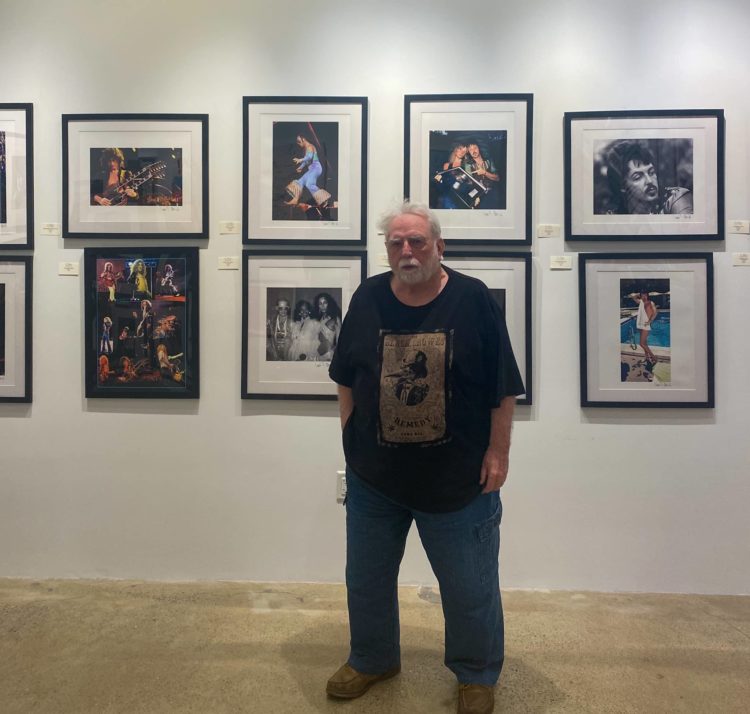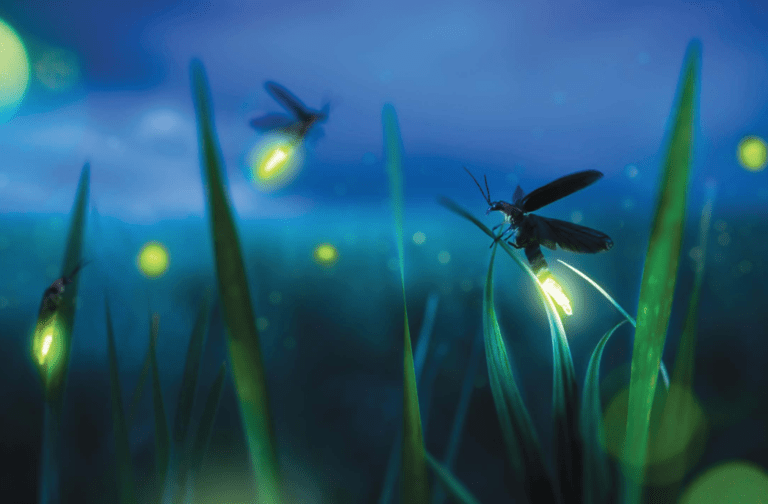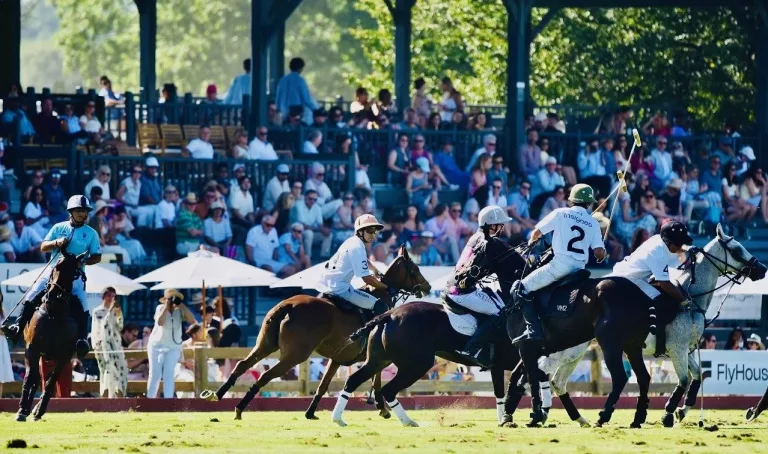
By Anjali Kishore
Elton John was hammering away at the piano with a contagious, pyrotechnic energy; Led Zeppelin, the Doors, and Aerosmith were shredding their Gibsons across the world, greeting hoards of cheering fans in each city; pop divas like Cher could be found crooning on the airwaves, or catching the light in blinding sequins on TV: the electric music scene of the 1970’s was surely a sight to behold.
Those who lived it recall it for its great variety and infectious groove, but for those of us who didn’t, it’s hard to imagine the fervor of the decade, with the rise of disco and edgy British rock now just a glimmer in our collective rearview mirror.
Lucky for us, photographer James Fortune was sitting shotgun for the whole wild ride, accompanied by his trusty film camera. From May 19th to 29th, Greenwich Avenue’s C. Parker Gallery will be showing a number of his more than 15,000 original photographs in an exhibition open to the public. The show opened Thursday, May 19th, with a soiree for Fortune and his work.
Fortune’s photographs offer a rare glimpse into not only the frenetic public antics and shows of the musicians, but also to the stripped-down personhood of some of the decade’s biggest stars. “You’ve got people up close and personal,” he recalls, “not only in concert but in hotel rooms and wherever.”
He goes on to recount stories of photographing Paul McCartney fresh out of the Beverly Hills Hotel pool, “Paul McCartney got out of the water and as soon as we were introduced, he struck this Gypsy Rose Lee pose with the white towel in front of him; he didn’t hold it there for more than two seconds, but because my camera was already loaded there, I just shot the picture.”
And meeting the substance-addled foursome of Led Zeppelin at the top of the Hyatt on Sunset Boulevard , “Led Zeppelin’s manager – this guy was 6’ 6”, 300-some-odd pounds, just a really big man – turned around and picked up maybe-135-pound Jimmy Page and asked, ‘Where do you want me to put him?’”
Throughout the years, Fortune has gathered a comprehensive archive of the decade’s bustling scene, but his ambitions didn’t initially point in that direction; in fact, though the once-architecture-student describes his foray into music photography in a matter-of-fact manner, his stratospheric rise was far from a clear shot. After graduating high school in 1965, Fortune entered Pierce College with the intention of studying architecture: “I was designing homes,” he describes, “I thought I was going to be an architectural design major – as a senior in high school, I designed two homes that were actually built, as crazy as that sounds.”
But an early passion for photography- which began with his mother’s backyard garden and a tiny Kodak Brownie camera had become profitable by the end of his high school career- drove him to join the school’s weekly newspaper in the photography department.
After a semester, Fortune rose to the position of editor, where he oversaw other student photographers’ assignments. Entering the newspaper his sophomore fall as editor, Fortune was struck with an idea.
“I had the bright idea in the dark room to contact record companies and see if I could get free albums if I interviewed their groups and photographed them,” he explains, “The first record company I approached was Elektra Records, because I was interested in Jim Morrison and the Doors; a few weeks later they contacted me and said, “How would you like to spend the afternoon in the recording studio where the Doors are recording their second album, Strange Days?”
And so, at the end of 1967, Fortune ended up in the studio with one of the world’s biggest bands at the time, so afraid of being disruptive that he kept his flash off. Regardless, he ended up leaving with a few rolls of film at which he would look back as being the beginning of an era.
Well, not quite – Fortune, as with nearly every college-age man at the time, was enlisted in the Armed Forces, and in 1968 he was sent to Vietnam with a photography unit. He spent 6 months abroad photographing the war, and in late 1968 he found himself back in California, where he carried on with his music photography work while working at a local daily newspaper. He got the ball rolling again with Mick Jagger’s 1973 benefit concert for Nicaragua in Los Angeles, and the photos he took from that show eventually connected him with a poster company, who printed posters of his Mick Jagger photographs.
Ultimately, Fortune would end up selling photos of Elton John , Led Zeppelin, the Rolling Stones, and more to the same poster company; a hustle which allowed him to put an early end to his traditional photography career and fully embrace all the opportunities that his skyrocketing reputation brought his way.
The rest is history; Fortune’s photos capture the stars we know in unfamiliar settings, including McCartney family portraits and shots of the elusive duo of John and songwriter Bernie Topin. “I have a collection of around 15,000 original negatives of music stars,” he muses, “and the majority of my negative collection is not on stage, in hotel rooms or somewhere else.”
This outward-facing display of genuineness captured the hearts of many a fan, and even artists themselves: Led Zeppelin’s Robert Plant named one of Fortune’s photographs as his favorite ever taken of him during his years with the band, and two years after Fortune took his photograph, Paul McCartney spotted him in the crowd at a Los Angeles concert and shouted him out into the live mic. “One year later, during their tour at the L.A. Forum, I was in the middle of the concert, leaning against the stage maybe 15 feet from him,” describes Fortune, with an air of incredulity and awe, “It was between songs, and he looked right at me and goes, ‘Hello, James!’”
The Rock and Roll Hall of Fame has over 150 photographs of Fortune’s in their permanent collection and Fortune is contacted by numerous book publishers and artists looking to do retrospectives, or fiftieth anniversary re-releases of iconic albums. The seventies may be over, but their impact is still present and perhaps only now fully recognizable – from decades in the future.
Fortune’s was a dynamic career for a boundary-pushing decade, and it all comes together this week at C. Parker Gallery. For more information, visit cparkergallery.com or contact the gallery at 203-661-0205.





